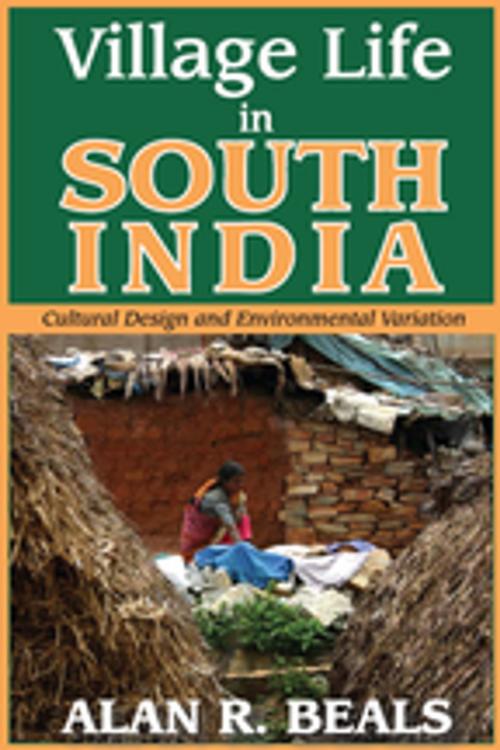Village Life in South India
Cultural Design and Environmental Variation
Nonfiction, Social & Cultural Studies, Social Science, Anthropology| Author: | Alan R. Beals | ISBN: | 9781351299909 |
| Publisher: | Taylor and Francis | Publication: | September 29, 2017 |
| Imprint: | Routledge | Language: | English |
| Author: | Alan R. Beals |
| ISBN: | 9781351299909 |
| Publisher: | Taylor and Francis |
| Publication: | September 29, 2017 |
| Imprint: | Routledge |
| Language: | English |
The traditional South Indian village pictures the entire universe as an entity in which all living things and human beings play a necessary and effective role. The stability of this worldview is based on a close relationship among human beings, grain crops, and cattle, which has permitted the continuous exploitation of agricultural lands over several centuries. Taken as a whole, the life of South Indian villagers represents a subtle and complicated adaptation to complex and variable environmental circumstances. It now faces the challenge of adjusting to modernization.After a fascinating description of the traditional South Indian worldview, Alan R. Beals describes the settlement patterns and social structures that characterize village life, the agricultural technology and ecology, and the techniques of population regulation that have traditionally operated to maintain appropriate man-to-land ratios. He then explains the relationships among villages, including marriage and economic exchanges, and the omnipresent influence of hierarchies of caste and social ranking.Over the past 2,000 years, South Indian civilization has undergone constant change and modification. Empires have risen and fallen, famine and plague have swept the land, and cities have been built and forgotten. But through all these years of change, the traditional South Indian village has maintained its basic character, adjusting to a variety of environments and countless conquests, yet always adhering to a single basic pattern of life. Village Life in South India, originally published in 1974, provides the reader not only with a still-valid description of a particular and distinctive way of life, but also with an explanation of how life is explained in ecological theory.
The traditional South Indian village pictures the entire universe as an entity in which all living things and human beings play a necessary and effective role. The stability of this worldview is based on a close relationship among human beings, grain crops, and cattle, which has permitted the continuous exploitation of agricultural lands over several centuries. Taken as a whole, the life of South Indian villagers represents a subtle and complicated adaptation to complex and variable environmental circumstances. It now faces the challenge of adjusting to modernization.After a fascinating description of the traditional South Indian worldview, Alan R. Beals describes the settlement patterns and social structures that characterize village life, the agricultural technology and ecology, and the techniques of population regulation that have traditionally operated to maintain appropriate man-to-land ratios. He then explains the relationships among villages, including marriage and economic exchanges, and the omnipresent influence of hierarchies of caste and social ranking.Over the past 2,000 years, South Indian civilization has undergone constant change and modification. Empires have risen and fallen, famine and plague have swept the land, and cities have been built and forgotten. But through all these years of change, the traditional South Indian village has maintained its basic character, adjusting to a variety of environments and countless conquests, yet always adhering to a single basic pattern of life. Village Life in South India, originally published in 1974, provides the reader not only with a still-valid description of a particular and distinctive way of life, but also with an explanation of how life is explained in ecological theory.















